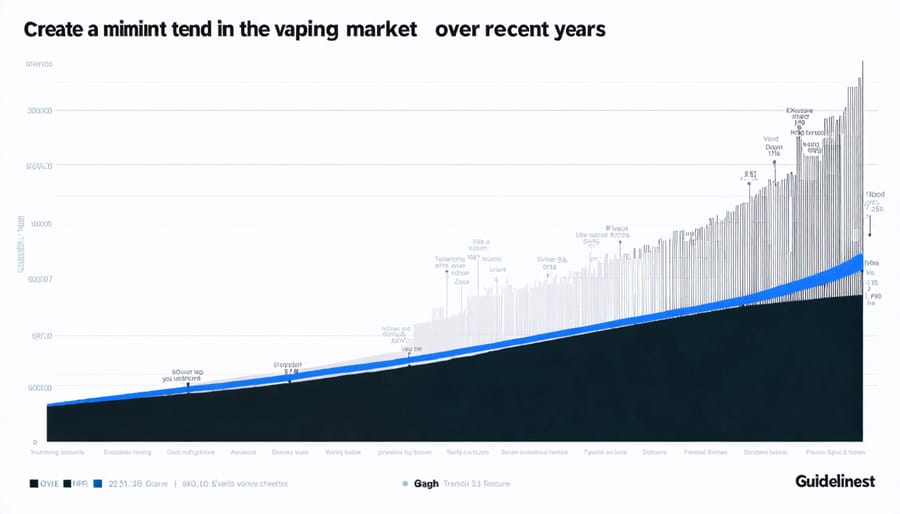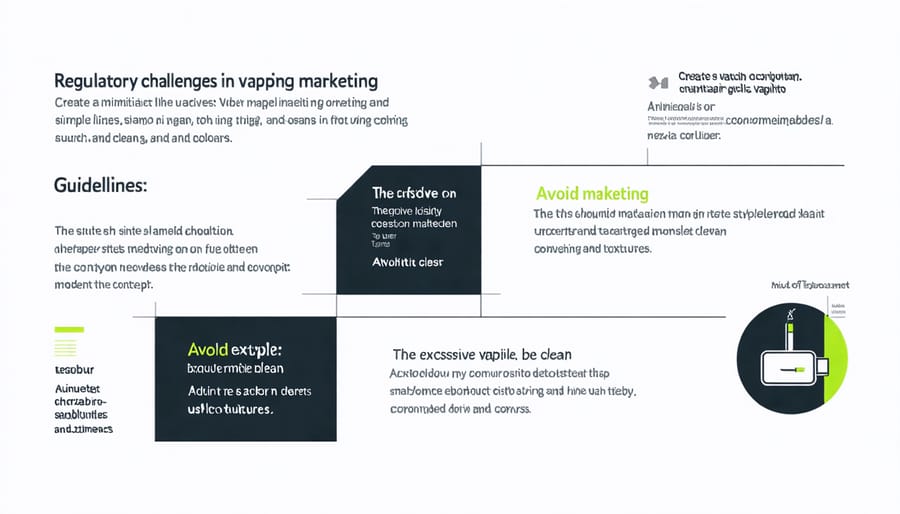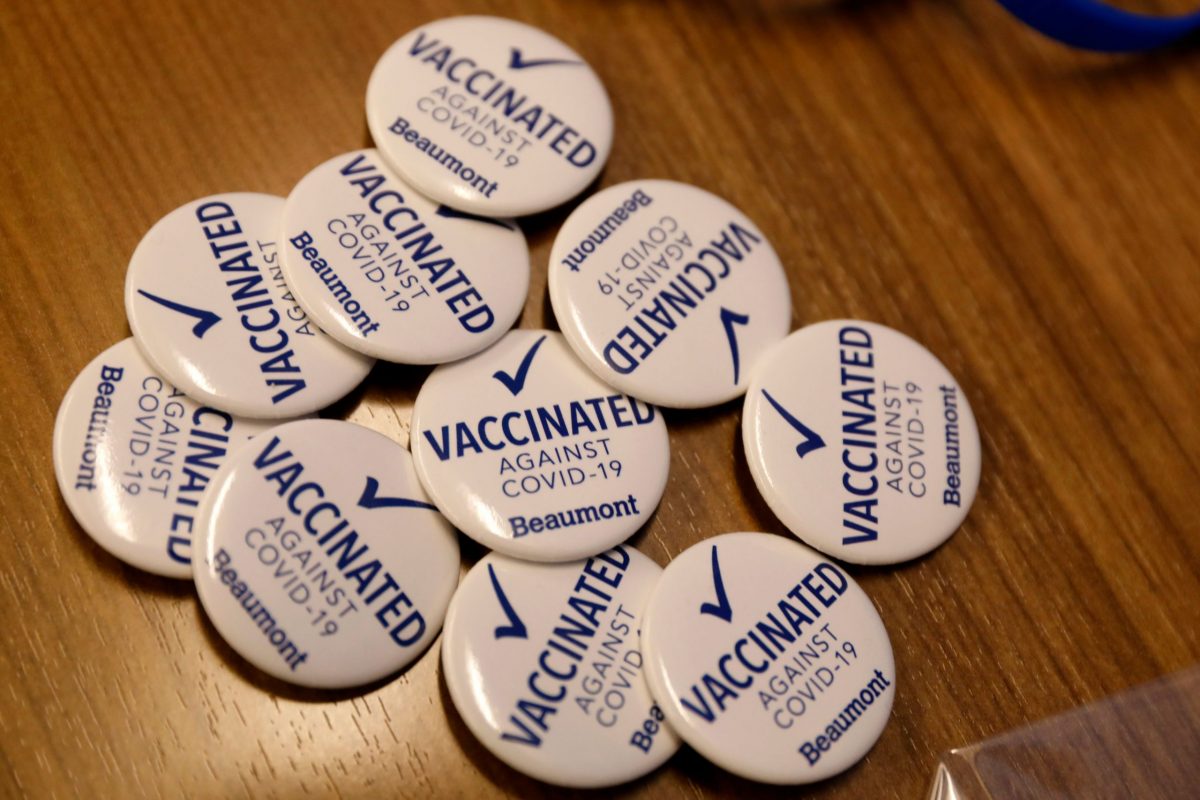Leverage digital platforms by crafting compelling narratives that resonate with consumer interests, enhancing brand loyalty and visibility, a strategy mirrored by successful experiments like the laval vape experience. Implement SEO strategies to elevate search rankings, focusing on niche keywords relevant to your audience. Harness the power of social media, employing targeted ads and influencer collaborations to expand reach and engage customers proactively. Optimize your website for user experience, ensuring seamless navigation and mobile compatibility. Adhere to stringent regulatory guidelines, ensuring compliance while maintaining transparent communication with clientele.
Understanding the Vaping Market Landscape
Market Growth and Trends
The vaping industry has witnessed remarkable growth, with its market size expected to reach over $60 billion by 2025, driven by evolving consumer preferences and technological advancements. This expansion necessitates innovative marketing strategies to capture and retain consumer interest in a highly competitive landscape. Emerging trends, such as the shift towards sustainable and organic options, have forced companies to adapt and appeal to environmentally-conscious consumers. Additionally, the rise of digital marketing platforms emphasizes the need for targeted online campaigns and social media engagement. Leveraging data analytics to track user behavior and preferences can provide valuable insights, enabling businesses to tailor their messaging for maximum impact. Furthermore, influencer marketing continues to gain traction, with influencer collaborations offering authenticity and enhanced brand visibility. By staying attuned to these developments, businesses can craft effective marketing strategies that align with industry trends, ultimately driving growth and ensuring a competitive edge in the vaping sector.

Consumer Demographics
Understanding consumer demographics is essential for crafting effective vaping marketing strategies. Vaping appeals to a diverse audience, with a significant portion being young adults, including millennials. These individuals often seek innovative and engaging experiences, making digital platforms a key channel for brands. Employing youth marketing strategies is essential as it addresses the preferences of this tech-savvy group. Additionally, studies suggest that well-received branding efforts focus on attracting millennials through values alignment, such as sustainability and social responsibility. By leveraging data-driven insights into these demographics, businesses can optimize their marketing tactics for greater engagement and conversion.
Digital Marketing Strategies for Vaping Products
SEO and Content Marketing
SEO and content marketing play a significant role in reaching vaping audiences online effectively. By employing strategic use of SEO, businesses can ensure their vaping products appear prominently in search engine results, targeting keywords that are relevant and frequently searched by potential customers. This visibility is crucial for attracting new users as well as retaining existing ones. Content marketing, on the other hand, focuses on creating valuable, informative, and engaging content that not only meets the informational needs of the audience but also aligns with their interests and lifestyle. This approach helps to build brand trust and authority in the vaping industry. By consistently producing high-quality content, vaping businesses can more effectively engage your audience, fostering community and brand loyalty. Furthermore, leveraging data-driven strategies allows for tailored and transparent reporting, ensuring that the marketing efforts are both targeted and effective in reaching the desired market segment within legal and regulatory confines.
Social Media Advertising
Utilizing platforms like Instagram and Facebook is crucial in the vaping industry’s marketing mix. These social media giants allow brands to effectively target users through engaging, data-driven campaigns that resonate with adult audiences. By analyzing user behaviors and preferences, businesses can create tailored content that enhances visibility and fosters community engagement. Instagram’s visual-centric nature and Facebook’s robust targeting options provide the perfect environment to creatively promote on social media while ensuring compliance with regulations. Successful campaigns focus on storytelling and value-driven content to build brand loyalty, making these platforms indispensable for businesses seeking to amplify their online presence.

Influencer Collaborations
Partnering with influencers has become a pivotal strategy in vaping marketing, leveraging their existing platforms and follower trust to enhance brand visibility. Influencers, especially those with a keen understanding of vaping culture, can create authentic content that resonates with target audiences, driving engagement and conversions. By selecting influencers whose values align with the brand, companies can effectively reach niche markets, providing a seamless integration of promotional content. This approach also benefits from data-driven insights, such as engagement metrics and demographic data, offering transparent reporting that helps refine campaigns. Influence partnerships can therefore drive business growth while maintaining compliance with advertising regulations.
Navigating Regulations and Ethical Marketing

Regulatory Challenges
The vaping industry faces significant regulatory challenges impacting marketing strategies. In recent years, governments worldwide have tightened restrictions on advertising vape products, primarily due to health concerns. In the United States, for instance, the Food and Drug Administration (FDA) mandates stringent advertising guidelines, limiting marketing to only adult audiences and banning TV and radio ads. These regulations require businesses to innovate within the legal framework, such as focusing efforts on age-gated digital platforms where data analytics help identify and target adult users effectively. Furthermore, the European Union’s Tobacco Products Directive imposes strict guidelines on promotion and branding, severely restricting traditional marketing channels. Thus, marketing teams must emphasize transparent communication and compliance to avoid significant penalties. Leveraging data-driven strategies, such as geotargeting and personalized content, while adhering to these regulations, allows businesses to navigate the complex legal landscape, ensuring sustained market presence and consumer trust. Understanding and adapting to these evolving regulations are crucial for staying competitive in the vaping industry.
Ethical Marketing Practices
Ethical marketing practices in the vaping industry are crucial to establish trust and maintain compliance with regulatory standards. Business owners and marketing managers should prioritize transparency in their campaigns, focusing on accurate representation of their products’ benefits and risks. Data-driven strategies can assist in targeting the appropriate adult audience, ensuring promotions don’t inadvertently appeal to underage individuals. It’s important to implement age verification measures across all digital platforms, alongside clear disclaimers about potential health impacts. Collaborative efforts with healthcare professionals can enhance credibility, providing consumers with factual health information. Additionally, it’s advisable to avoid glamorizing vaping in advertising, focusing instead on practical attributes and product innovations. Businesses should remain abreast of evolving legislation to ensure all marketing materials are compliant with legal requirements. Regular training for marketing teams on ethical guidelines and transparent reporting systems can further bolster responsible marketing efforts, ultimately enhancing the brand’s integrity and customer trust.
Case Studies of Successful Vaping Marketing Campaigns
Brand A: Social Media Mastery
Brand A’s impressive use of social media has set a high standard in the vaping industry’s marketing landscape. By crafting a data-driven social media strategy, Brand A effectively engaged with its target audience, from individual consumers to industry influencers. Through careful analysis of audience behavior and preferences, Brand A identified the most active platforms for their demographic, prioritizing Instagram and Twitter for their visually-driven content and real-time engagement potential.
The brand committed to regular, transparent reporting, sharing performance metrics and audience insights that informed ongoing campaign adjustments. This openness not only built trust with their followers but also fostered community engagement. Brand A’s strategic use of user-generated content and influencer collaborations created authentic connections, amplifying their message through credible voices.
By leveraging sophisticated social listening tools, Brand A stayed ahead of trends, adjusting content to align with the evolving interests of their audience. This adaptive approach ensured maximum reach while maintaining compliance with industry regulations. Their strategy illustrates the power of tailored social media campaigns in achieving sustained growth and brand loyalty.
Brand B: Influencer Impact
Brand B has effectively leveraged influencer collaborations to boost its presence in the vaping market by adopting a comprehensive, data-driven approach. The brand carefully selects influencers whose audiences align with its target demographic, ensuring optimal reach and engagement. By utilizing sophisticated analytics tools, Brand B tracks metrics such as engagement rates, conversion figures, and audience demographics to continuously refine their influencer partnerships. This transparent reporting not only helps the brand adjust its strategies in real-time but also allows it to demonstrate tangible ROI, fostering stronger relationships with influencers. Additionally, Brand B emphasizes authentic content creation, encouraging influencers to share personal experiences and responsible usage narratives that resonate with their followers, while complying with advertising regulations. By focusing on transparency and audience trust, Brand B has enhanced brand credibility and expanded its market share within the vaping industry, setting a benchmark for effective influencer marketing strategies.
Measuring Marketing Success in the Vaping Industry
To effectively measure marketing success in the vaping industry, businesses must consider a range of metrics and indicators that provide a comprehensive view of both online and offline performance. Start with digital analytics; tracking website traffic, conversion rates, and customer engagement can reveal how well your strategies are capturing audience interest. Tools like Google Analytics offer in-depth insights into user behavior, helping you optimize content and layout for better results.
In the social media realm, monitor engagement rates, follower growth, and share of voice to gauge brand visibility and customer interaction. These metrics are crucial for assessing your social media strategies and identifying areas for improvement. Email marketing metrics such as open and click-through rates can further highlight the effectiveness of your outreach efforts.
Additionally, consider customer feedback and online reviews as qualitative data. Positive reviews and high satisfaction scores can enhance reputation and customer loyalty. By regularly examining these data points, marketing managers can refine their strategies, ensuring a competitive edge in the dynamic vaping industry.
Conclusion
In conclusion, effective vaping marketing strategies hinge on a combination of data-driven approaches and ethical practices. By harnessing analytics and customer insights, businesses can tailor campaigns that resonate with targeted audiences, enhance engagement, and drive sales. Transparent reporting is crucial, ensuring that marketing efforts are not only effective but also comply with industry regulations and ethical standards. As the market continues to evolve, adopting a comprehensive strategy that prioritizes both impact and integrity will be essential for business owners and marketing managers aiming to strengthen their online presence and foster consumer trust in the vaping industry.







